Primary navigation
Blue and pink woodland plants
When you are looking for bluebells you might also find blue, pink or other coloured plants in the woodlands of the British Isles.
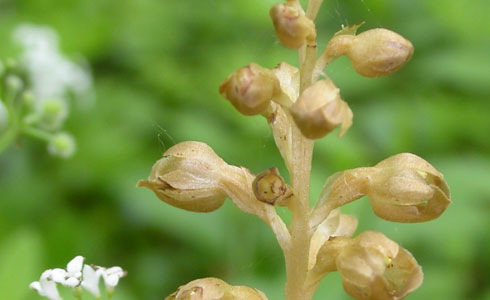
Bird's nest orchid, Listera nidus-avis, Somerset. Widespread throughout the UK, but declining because of changes in forest management. This orchid prefers old shady woodlands and it is most frequent in areas with deep leaf litter. It doesn't have any green chlorophyll, so it cannot photosynthesize, which means it is dependent on fungi for its nutrition. See map for more information about its distribution. © F.J. Rumsey.
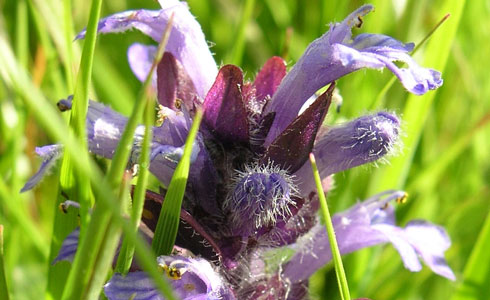
Bugle, Ajuga reptans, W. Cornwall. A purple-leaved plant often grown in gardens. It can also occur as an escape from cultivation. See map for more information about its distribution. © M.A. Spencer.
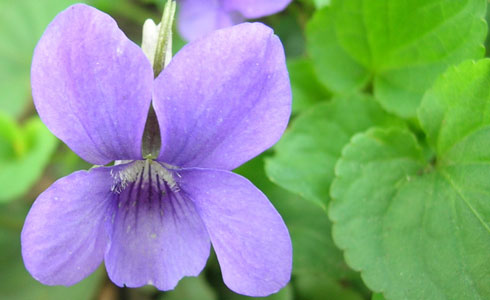
Common dog violet, Viola riviniana, W. Kent. Widespread across most of the UK, except northern Scotland. Unlike sweet violet, these plants do not have a sweet scent. See map for more information about their distribution. © M.A. Spencer.

Early purple orchid, Orchis mascula, W. Cornwall. Widespread throughout the UK, predominantly in old deciduous woodlands on calcareous to neutral soils. It is identifiable by the very distinctive reddish-purple blotched glossy leaves even when it isn't flowering. See map for more information about its distribution. © M.A. Spencer.
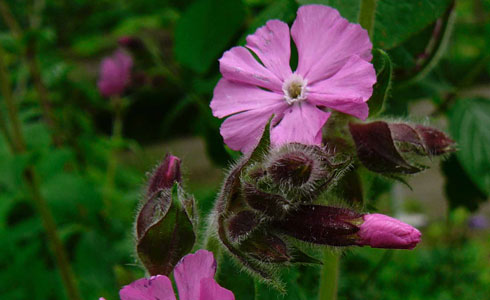
Red campion, Silene dioica, Greater London. Widespread across most of the UK, this is also a common plant in hedgerows and coastal grasslands. See map for more information about its distribution. © M.A. Spencer.
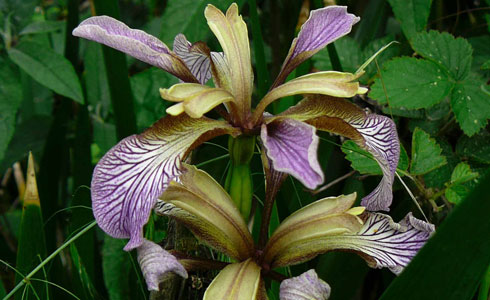
Stinking Iris, Iris foetidissima, Greater London. Locally common in southern England. Common in gardens and often found as an escape elsewhere. See map for more information about its distribution. © M.A. Spencer.

Sweet violet, Viola odorata, Greater London. Widespread across most of the UK, except northern Scotland. It may occur as a garden escape. This is most likely for plants with white or pink flowers. See map for more information about its distribution. © F.J. Rumsey.

Toothwort, Lathraea squamaria, W. Kent. Scattered thinly throughout lowland Britain but largely absent from the extreme south-west and much of East Anglia. This is a parasite on the roots of hazel and sometimes other woodland trees. It is creamy-white to pink in colour as it doesn't have any green chlorophyll. See map for more information about its distribution. © F.J. Rumsey.
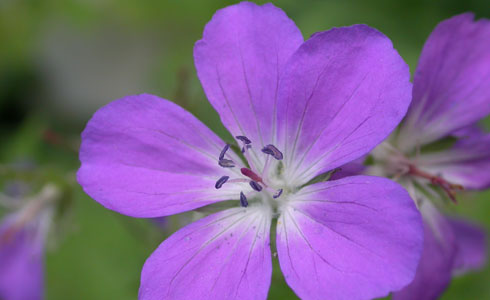
Wood crane's-bill, Geranium sylvaticum, cultivated. Widespread but now decreasing in abundance throughout northern England and Scotland. It is very rare or planted elsewhere and is only occasionally grown in gardens. See map for more information about its distribution.

Wood forget-me-not, Myosotis sylvatica, Greater London. Widespread across most of the UK but its native range is unclear because it is frequently grown in gardens and often escapes. See map for more information about its distribution. © M.A. Spencer.
Toolbox
- Contact and enquiries
- Accessibility
- Site map
- Website terms of use
- © The Trustees of the Natural History Museum, London
- Information about cookies
- Mobile
